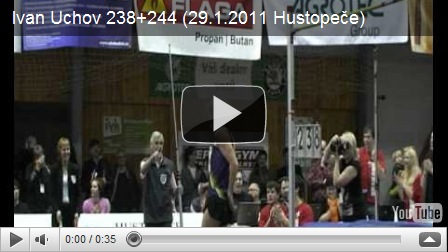Now THAT was an exciting weekend of track and field! Hot races, hot team competitions and of course some stellar marks being put down by several athletes. But easily the best of the best on this weekend were a pair of 400 meter runs – a WJR for Kirani James and a National record for L.J. Van Zyl.
Kirani James – 44.80 WJR
I said a few weeks ago that Kirani James was one of the young athletes to keep an eye on this year – and he wasted little time in making me look like Nostradamus as he scorched 400 in 44.80 at the SEC Championships. The SEC final was run in two sections and in the first section Florida’s Tony McQuay scorched a 45.21 world leader of his own, so when James took to the track he needed at least 45.20 for the win. He went wire to wire as he became #3 all time indoors – behind only Kerron Clement (44.56) and Michael Johnson (44.63). McQuay was no slouch, his mark making him #10 all time indoors!
L.J. Van Zyl – 47.66 400 IH National Record
Van Zyl went into the first outdoor meet of the year with a best of 47.94. One lap of the track and ten hurdles later he had a national record 47.66. That time would have made him #3 in the world on the clock just this past year, and bodes well for his chances at improving on his 5th place finish in Beijing (6th in semi in Berlin). Note that the altitude in Pretoria (1363m) was undoubtedly a bit helpful, but sub 48 in February under any conditions is unheard of, this being the first time ever that it has happened. The previous February best was a 48.02 run by Ockert Brits in 2004 – also in Pretoria.
Florida Men win SEC Champs w/ Sterling Performances
The University of Florida served notice that it is ready to defend it’s indoor championship from last year with a solid victory at the SEC championships – 148 pts to Arkansas’ 136.5 pts for second. Always known for outstanding sprinters and hurdlers (John Capel, Bernard Williams and Kerron Clement among its alumni) they won the 60 (Jeff Demps, 6.55), 60H (Eddie Lovett, 7.73) and 200 ( Tony McQuay, 20.61 to go with a second place 45.21 behind Kirani James’ 44.80 WJR). But in racking up their impressive point total they had a shot put win (64’ 1”) from Kemel Mesic, a mile (4:04.21), 3000 (8:00.34) double from Dumisani Hlaselo, a Heptathlon win (5,816) from Gray Horn, and a 1,2,3 in the triple jump from Christian Taylor (56’ 11.5”), Will Claye (56’ 4”), and Omar Craddock (54’ 4.5”)! The triple jumpers would have finished 1, 2, 4 at US Nationals this weekend! Heading into the NCAA Championship meet, Florida sits as my favorite to repeat as champs.
US Nationals Highlights
As expected there were not a lot of stars in attendance at this year’s US Championships. None the less the there were still a number of outstanding performances.
Jenny Simpson pulled off a neat mile/3000 meter double. The times were not impressive – I forgot about the altitude of Albuquerque – but her dismantling of both fields was. In each race she ran up front before simply running away from the competition within the final 400 meters.
Bernard Lagat showed that he is still the class of US distance runners with his 3000 meter win. But I was also impressed with Galen Rupp in second. Lagat and Rupp ran together for the entire race until Lagat demonstrated the difference between he and the rest of the US distance runners – his ability to kick and run away in the closing stages. Rupp lacks that kick element to his race, but showed that he was not intimidated and that he can hold pace. Now if he (and a couple other guys) can develop that kick he’ll be good to go.
Ryan Whiting had the four longest throws of the shot put competition and went 70 feet on his 5th toss. Right now I see only Cantwell as his superior among US throwers.
Phoebe Wright got a dominating win in the women’s 800. The altitude precluded her from a fast time, but she is clearly one of the best of our new crop of 800 runners.
Mike Rodgers finally got that dominating win I’ve been looking for from him as he scorched the track with a 6.48 world leading performance. What I was most impressed by, however, is that he won the race without a blitzkrieg start. His race showed patience and a nice midrace surge. He will need that type of race to make the team outdoors for Daegu.
Jenn Suhr dominated the pole vault and set a new American Record of 15’ 11.25”. And Natasha Hastings gave us the year’s first sub 51 in the 400 (50.83).
Two new women to keep an eye on after this weekend. One is long jumper Janay DeLoach who won this weekend’s competition with an outstanding 22’ 11.25” leap. Impressively she had 3 jumps over 22 feet and defeated Brittney Reese in the process. The other is sprinter Alexandra Anderson who scored a 6.12 to 6.13 win over Camelita Jeter. I’ve like Anderson’s race for a while, but this weekend she seemed to put it all together. She was poised and showed solid pickup throughout the race. Given her usually strong finish, she could make a solid run at the team outdoors – a finalist at least in my humble opinion.









